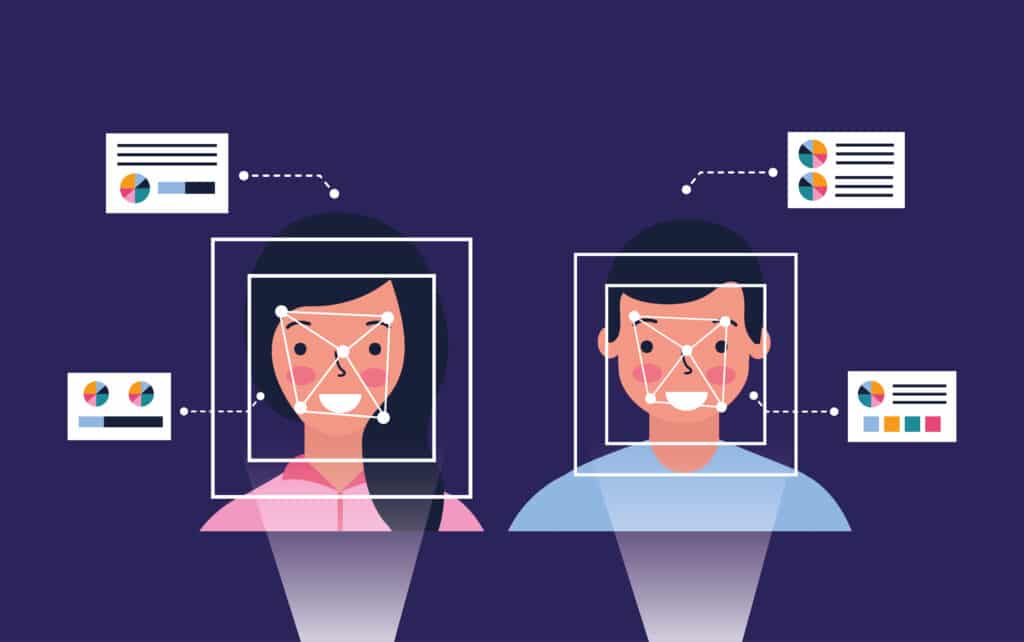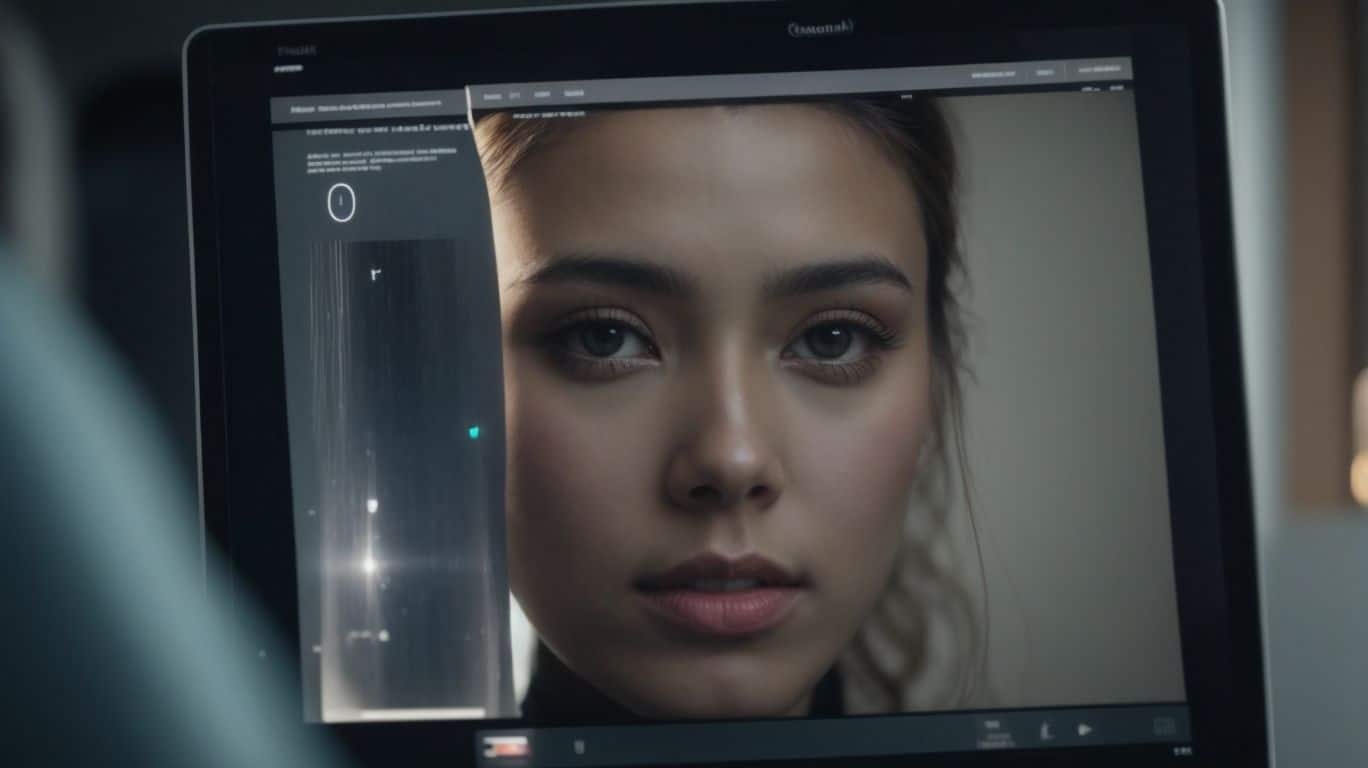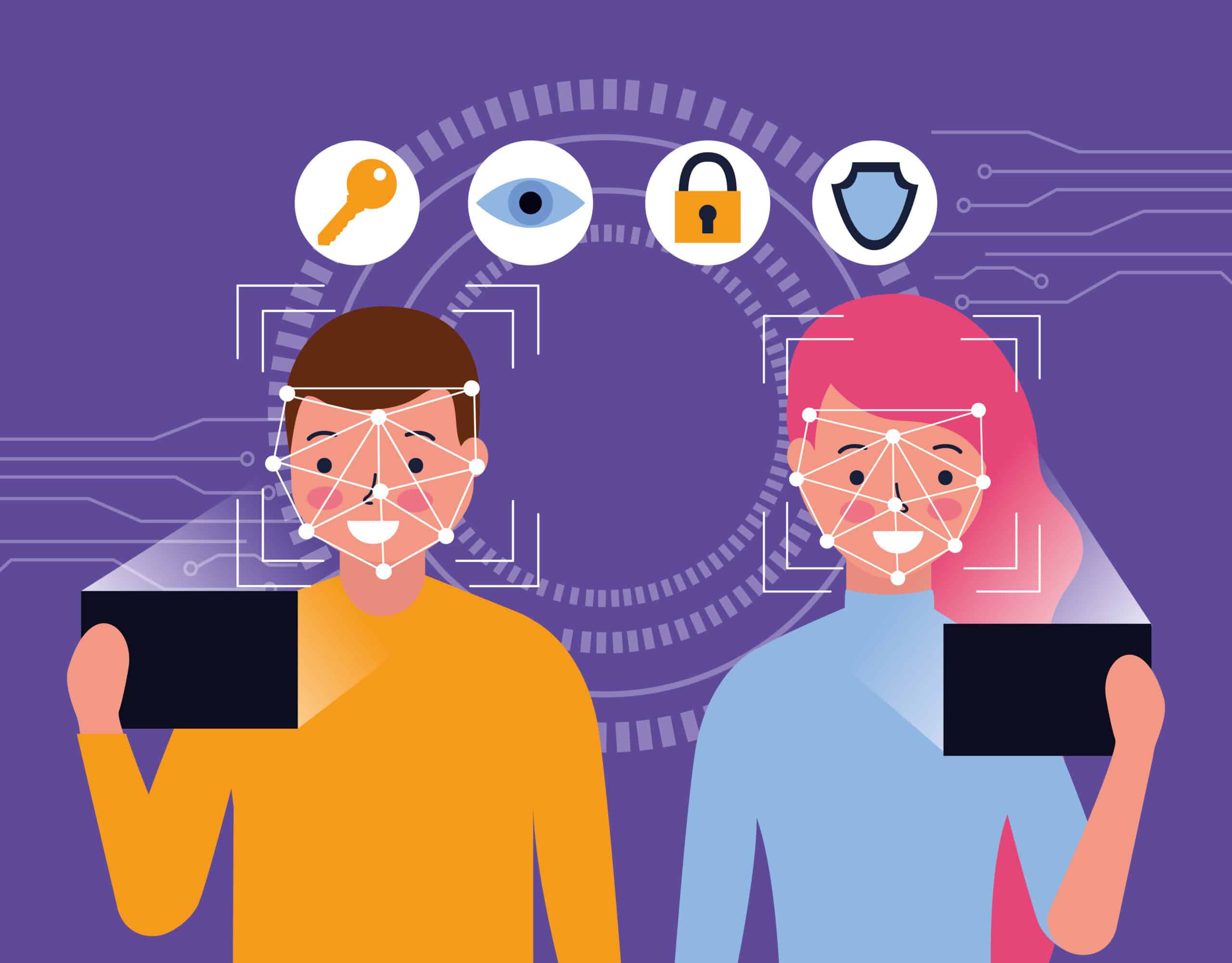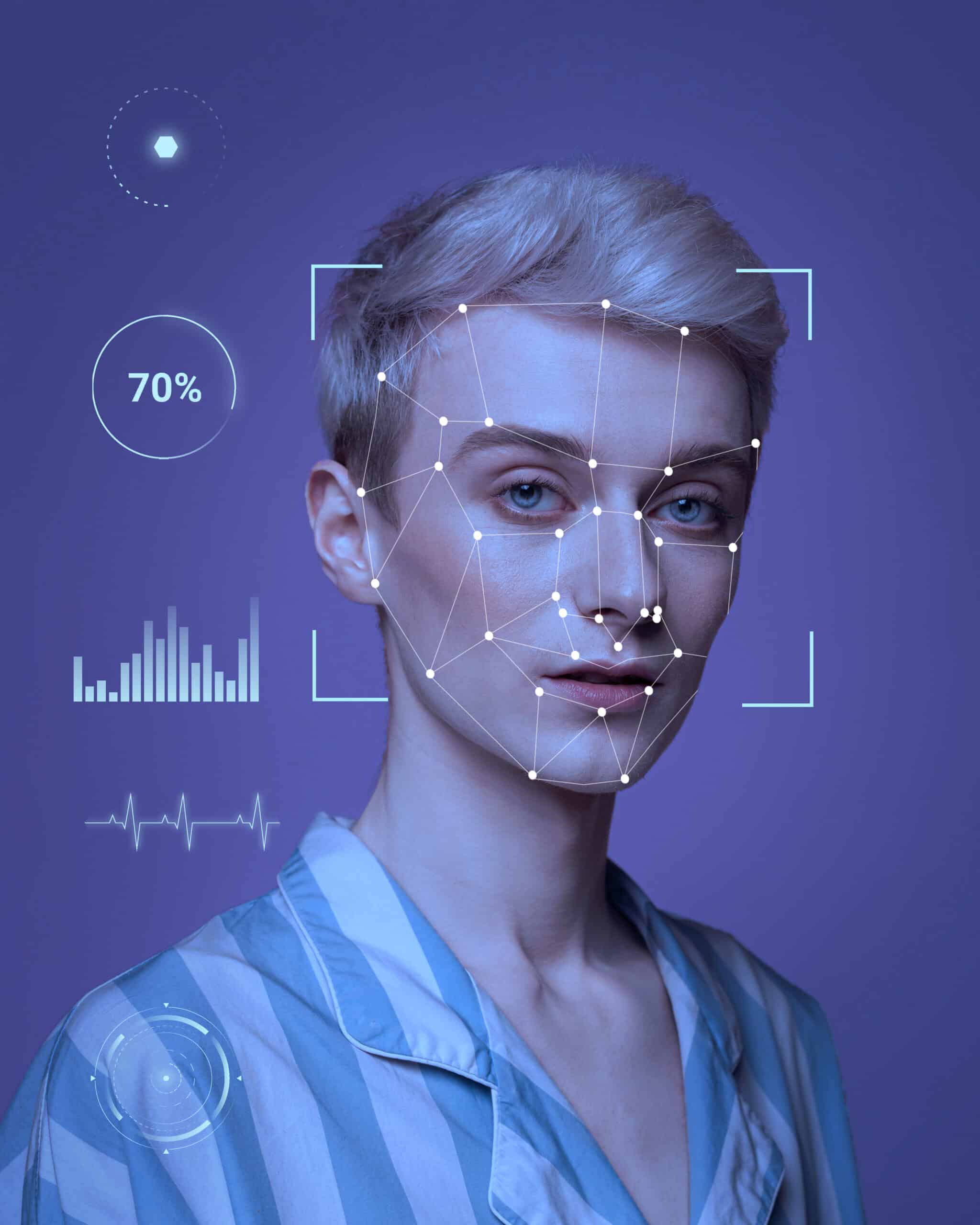Demystifying Facial Recognition Identity Verification for Compliance


Facial recognition technology has become increasingly prevalent in various industries, providing a convenient and secure way to verify identities.
Businesses adopting this technology must navigate the complex landscape of compliance regulations.
In this article, we will delve into the world of Facial Recognition Identity Verification, exploring its importance, functionality, benefits, and concerns surrounding its implementation.
We will also discuss how businesses can ensure compliance with regulations like GDPR, CCPA, and BIPAs.
Let’s explore the nuances of facial recognition technology together.
What Is Facial Recognition Identity Verification?
Facial recognition identity verification is a process that involves using biometric data and technology to authenticate individuals based on their facial features and unique algorithms.
This innovative technology utilizes advanced software to analyze facial characteristics such as the distance between eyes, nose, and mouth, as well as unique patterns like facial shapes and contours. Through the use of complex algorithms, the system can accurately match an individual’s facial features against stored data for identification purposes.
Facial recognition technology has significantly enhanced security measures in various industries, including banking, law enforcement, and border control, by providing a quick and reliable way to verify a person’s identity.
Why Is Facial Recognition Identity Verification Important?
Facial recognition identity verification is crucial due to its role in ensuring compliance with regulations, enhancing security measures, protecting user privacy, and maintaining data accuracy.
By employing facial recognition technology for identity verification, organizations can significantly mitigate the risks associated with fraudulent activities and identity theft. This advanced form of authentication ensures that only authorized individuals have access to sensitive information, bolstering overall security protocols.
It simplifies user consent management processes by providing a seamless and efficient way of verifying one’s identity without the need for physical documents or passwords. This enhances user experience while reducing the potential for data breaches and unauthorized access.
How Does Facial Recognition Identity Verification Work?
Facial recognition identity verification operates by utilizing advanced technology to conduct facial scans, perform facial matching processes, ensure biometric data security standards, and accurately identify users.
The technology involved in this process typically includes sophisticated algorithms that analyze unique facial characteristics, such as facial landmarks and textures.
Compliance considerations are vital in facial recognition, with many regulations in place to protect user privacy and data security.
Facial scanning procedures involve capturing an image of the face, usually through a camera, and creating a facial template for comparison.
Matching techniques employ complex algorithms to assess similarity between facial features and the stored template.
Maintaining high security standards for biometric data is essential, often involving encryption, secure databases, and restricted access protocols.
Facial Detection
Facial detection is the initial stage of facial recognition that involves capturing facial features through specialized software for further processing.
- This process begins with the capture of facial images either through photographs or video footage.
- The software then analyzes these images, detecting key facial landmarks such as the eyes, nose, and mouth.
- The software uses algorithms to compare these landmarks with a database of known faces to determine potential matches.
Accurate feature extraction is crucial, as even minor variations in facial expressions or angles can impact the recognition process. The precision of feature analysis plays a significant role in ensuring the reliability and effectiveness of facial recognition technology.
Facial Landmark Detection
Facial landmark detection focuses on identifying specific facial biometrics and features, often incorporating liveness detection to ensure the authenticity of facial recognition systems.
By recognizing unique biometrics such as the distance between eyes, nose shape, and jawline structure, facial landmark detection algorithms create a digital facial map for identification purposes.
The inclusion of liveness detection measures further enhances security by confirming that the individual is physically present during the identification process.
Advanced facial recognition systems utilize machine learning algorithms to analyze these facial landmarks, providing highly accurate identification results for security, access control, and personalized user experiences.
Facial Feature Extraction
Facial feature extraction involves processing facial data to create unique identifiers for matching, employing sophisticated algorithms for accurate facial recognition and identity validation.
The process starts by capturing an individual’s facial image and then analyzing it to identify key features such as the distance between eyes, shape of the nose, and contours of the face.
Complex algorithms apply to extract and quantify these features, transforming them into numerical data points that form a facial template.
The system compares these templates with existing templates in a database using pattern matching techniques to determine a potential match. It further ensures identity validation through additional checks on extracted features to confirm the accuracy of the match.
Facial Matching
Facial matching is the final stage where the extracted facial data is compared against stored templates, following specific verification methods and compliance standards with consent management.
This process involves a sophisticated comparison mechanism that analyzes various facial features such as the distance between eyes, nose shape, and jawline alignment. By meticulously examining these details, the system determines the level of similarity between the presented facial data and the stored templates.
Adherence to stringent verification methods ensures the accuracy of the matching process, minimizing the margin of error. Compliance standards play a crucial role in guaranteeing data security and privacy throughout the verification stage. Consent management further enhances the integrity of the process by obtaining explicit approval before proceeding with the final verification.
What Are the Benefits of Facial Recognition Identity Verification?
Facial recognition identity verification offers benefits such as increased security and fraud prevention, enhanced user experience, and streamlined compliance processes.
By utilizing facial recognition technology for identity verification, organizations can ensure higher security levels by leveraging biometric factors unique to each individual. This not only deters fraudulent activities but also enhances user interactions through swift and convenient authentication processes.
The efficiency of compliance procedures is significantly boosted, with automated verification reducing manual errors and ensuring regulatory adherence with greater accuracy.
Increased Security and Fraud Prevention
One of the primary benefits of facial recognition identity verification is the heightened security levels it provides, enabling robust fraud prevention mechanisms and ensuring compliance with personal data protection guidelines.
Facial recognition technology has been instrumental in enhancing security across various sectors such as banking, healthcare, and law enforcement. By accurately identifying individuals through facial biometrics, organizations can significantly reduce instances of identity theft and unauthorized access. This advanced verification process not only minimizes the risk of fraudulent activities but also contributes to maintaining stringent compliance with regulatory frameworks, thereby safeguarding sensitive personal data from potential breaches.
Implementing facial recognition systems can further streamline verification processes, enhance user experience, and foster a more secure digital ecosystem.
Enhanced User Experience
Facial recognition identity verification enhances user experience by simplifying authentication processes, ensuring compliance with data privacy laws, and maintaining high levels of verification accuracy.
By seamlessly integrating with user consent regulations, facial recognition technology ensures that user data is protected throughout the authentication process. This alignment with regulations provides users with peace of mind, knowing that their personal information is being handled responsibly.
The efficiency of facial recognition contributes to a smoother user journey, eliminating the need for complex authentication steps and creating a more user-friendly experience. The exceptional accuracy of facial recognition technology further promotes trust and reliability in the verification process, making it a preferred method for secure identity authentication.
Streamlined Compliance Processes
Facial recognition identity verification streamlines compliance processes by integrating advanced technology, establishing robust compliance protocols, and preserving data integrity throughout the verification procedures.
This technology aids in optimizing compliance procedures by efficiently authenticating the identity of individuals, reducing the risk of fraudulent activities. By implementing effective compliance protocols, facial recognition ensures that regulatory standards are met consistently. The seamless integration of this technology maintains data integrity during the identity verification process, safeguarding sensitive information and enhancing overall security measures. This not only expedites the compliance process but also enhances accuracy and reliability in verifying individuals’ identities.
What Are the Concerns Surrounding Facial Recognition Identity Verification?
Challenges related to facial recognition identity verification include concerns over privacy invasions, biases and inaccuracies in identification, and potential misuse of collected data.
Facial recognition technology, while promising in enhancing security and convenience, also raises red flags regarding personal privacy. Biometric data, once compromised, can have severe implications for individuals. The biases inherent in the algorithms can lead to false identifications, impacting certain groups disproportionately.
Inaccurate facial recognition matches can result in serious consequences for individuals, such as wrongful identifications. The risk of data misuse, whether through unauthorized access or commercial exploitation, underscores the importance of stringent regulations and accountability in the deployment of facial recognition systems.
Invasion of Privacy
Privacy infringement is a significant concern in facial recognition identity verification, necessitating adherence to stringent privacy regulations, robust compliance procedures, and secure user authentication methods.
Facial recognition technology raises complex ethical and legal questions regarding individuals’ right to privacy. It is crucial for organizations to prioritize data protection in their facial recognition systems to uphold the trust of users and adhere to privacy laws. By implementing transparent and ethical practices, companies can mitigate privacy risks and safeguard sensitive biometric data.
Ensuring secure user authentication practices, such as multi-factor authentication and encryption, can enhance the overall privacy and security of facial recognition systems.
Biases and Inaccuracies
Biases and inaccuracies pose challenges to facial recognition identity verification systems, requiring a focus on enhancing verification accuracy, complying with regulatory standards, and validating user identities effectively.
- These challenges highlight the critical need for improvements in ensuring that facial recognition technology functions seamlessly and reliably in identity verification processes.
- Addressing biases can help prevent discriminatory outcomes and uphold fairness in the verification process.
- Inaccuracies must be minimized to prevent false positives or negatives that can lead to security breaches or identity theft.
Meeting regulatory compliance requirements is essential to safeguarding data privacy and ensuring that facial recognition systems are used ethically and legally. Robust identity validation processes are vital for enhancing security measures and protecting individuals’ identities in an increasingly digital world.
Misuse of Data
The potential misuse of collected data is a critical concern in facial recognition identity verification, necessitating stringent compliance controls, safeguarding user identity, and implementing secure facial recognition solutions.
One major risk associated with data misuse in facial recognition is the violation of privacy rights and potential breaches of sensitive information. Without robust compliance controls, there is the risk of unauthorized access to personal data. Protecting user identities becomes paramount to prevent identity theft or profiling. Deploying secure facial recognition solutions is crucial to minimize the chances of unauthorized data access or misuse, ensuring that individuals’ personal information is safeguarded from exploitation or manipulation.
How Can Businesses Ensure Compliance with Facial Recognition Identity Verification?
Businesses can achieve compliance with facial recognition identity verification by prioritizing transparency and consent, implementing robust data protection measures, and fulfilling compliance obligations effectively.
This includes providing clear and concise information to individuals about how their facial data will be used and obtaining explicit consent before collecting or processing any information. Businesses should invest in encryption techniques and secure storage methods to safeguard sensitive data. Regular audits and assessments should be conducted to ensure that all processes align with regulatory requirements and that any potential risks are promptly addressed.
By adopting these strategies, businesses can foster trust among customers and demonstrate a commitment to protecting their privacy.
Transparency and Consent
Transparency and consent play a pivotal role in facial recognition compliance, necessitating clear consent management practices, adherence to compliance requirements, and effective identity validation procedures.
Ensuring transparency in facial recognition technology is essential not only for building trust with individuals but also for meeting regulatory standards. By obtaining explicit consent from individuals before using their biometric data, organizations can demonstrate their commitment to ethical practices.
Consistently communicating and educating about how facial recognition technology is used, along with providing individuals with the option to opt-in or opt-out, are key components of effective consent management.
Adding an extra level of security and compliance to the process, validating identities through multiple verification layers ensures that personal data is securely handled and regulatory requirements are met.
Data Protection Measures
Implementing robust data protection measures is essential for facial recognition compliance, involving stringent data security measures, efficient compliance management, and ensuring data accuracy throughout the verification process.
Data protection safeguards sensitive information from cyber threats and unauthorized access, which is particularly vital in facial recognition processes where personal data is involved. By implementing encryption techniques, access controls, and regular security audits, organizations can mitigate the risk of data breaches and maintain compliance with regulations such as GDPR and CCPA. Ensuring data accuracy during verification is essential to prevent errors in identity verification, enhancing the reliability and trustworthiness of facial recognition systems for compliance purposes.
Regular Audits and Reviews
Regular audits and reviews are critical for maintaining facial recognition compliance, facilitating compliance reviews, implementing effective compliance solutions, and validating the accuracy of identity verification methods.
These audits and reviews play a vital role in consistently verifying that facial recognition systems adhere to regulatory standards and ethical guidelines. By conducting thorough compliance reviews, organizations can detect and address any potential issues or disparities in their facial recognition processes. Deploying suitable compliance solutions not only helps in ensuring legal compliance but also in safeguarding individuals’ privacy and data protection. Regular validation of identity verification methods is essential to evaluate their reliability and accuracy in accurately identifying and verifying individuals.
What Are the Regulations and Laws Governing Facial Recognition Identity Verification?
Various regulations and laws, including the General Data Protection Regulation (GDPR), the California Consumer Privacy Act (CCPA), and Biometric Information Privacy Acts (BIPAs), govern facial recognition identity verification.
The GDPR, for instance, mandates strict guidelines on how to collect, store, and process personal data, including biometric information, ensuring that the use of facial recognition technology for identity verification purposes is carried out ethically and securely. Similarly, the CCPA gives consumers control over their personal information and requires businesses to disclose how they use biometric data. BIPAs provide additional protections for biometric data by requiring explicit consent before its collection and limiting its retention period.
General Data Protection Regulation (GDPR)
The General Data Protection Regulation (GDPR) sets stringent standards for data protection, requiring compliance measures such as data encryption, robust compliance strategies, and adherence to data privacy regulations.
These requirements are particularly relevant in the context of facial recognition technology, where the processing of biometric data presents unique challenges. Ensuring that facial recognition systems comply with GDPR involves implementing encryption protocols to safeguard the sensitive biometric information captured.
Organizations must develop comprehensive compliance strategies that address the specific implications of using facial recognition technology in a way that aligns with the data privacy compliance requirements outlined in the GDPR. By prioritizing data protection and adopting best practices for handling biometric data, companies can navigate the complexities of GDPR while leveraging the benefits of facial recognition technology.
California Consumer Privacy Act (CCPA)
The California Consumer Privacy Act (CCPA) mandates strict data protection regulations, necessitating compliance with robust protocols, implementing effective compliance measures, and following facial recognition guidelines in alignment with CCPA.
Businesses operating in California must carefully review the CCPA requirements related to facial recognition to ensure they are in line with the legislation. Compliance protocols include obtaining express consent for collecting facial data, providing individuals with the option to opt-out of facial recognition technologies, and safeguarding the security and confidentiality of the data collected.
Implementing compliance measures such as designated compliance officers, routine audits, and data breach response plans are essential components of adhering to facial recognition guidelines outlined by the CCPA.
Biometric Information Privacy Acts (BIPAs)
Biometric Information Privacy Acts (BIPAs) establish rules for biometric data protection, requiring effective compliance management, thorough compliance documentation, and meticulous compliance implementation processes.
These provisions play a critical role in safeguarding sensitive biometric information by setting clear guidelines that organizations must adhere to. Compliance management ensures that companies follow best practices in data protection, while comprehensive documentation serves as a record of all compliance measures taken. Diligent implementation of these procedures is crucial for maintaining the integrity and security of biometric data. By complying with the provisions outlined in BIPAs, organizations demonstrate their commitment to protecting individuals’ privacy rights and upholding ethical standards in handling biometric information.
Frequently Asked Questions
What is Navigating Compliance: Facial Recognition Identity Verification Explained?
Navigating Compliance: Facial Recognition Identity Verification Explained is a process of using facial recognition technology to verify the identity of an individual for compliance purposes.
How does Navigating Compliance: Facial Recognition Identity Verification work?
Navigating Compliance: Facial Recognition Identity Verification works by comparing a person’s facial features to a database of known identities, using biometric algorithms to determine a match.
Why is Navigating Compliance: Facial Recognition Identity Verification important?
Navigating Compliance: Facial Recognition Identity Verification is important because it provides a more secure and accurate way of verifying an individual’s identity, reducing the risk of fraud and ensuring compliance with regulations.
What are the benefits of using Navigating Compliance: Facial Recognition Identity Verification?
Some benefits of using Navigating Compliance: Facial Recognition Identity Verification include faster and more efficient identity verification processes, increased security and fraud prevention, and improved compliance with regulations.
Are there any potential concerns or drawbacks to using Navigating Compliance: Facial Recognition Identity Verification?
Some concerns with Navigating Compliance: Facial Recognition Identity Verification include privacy issues, potential for bias or errors in the technology, and the need for proper data management and security measures.
Is Navigating Compliance: Facial Recognition Identity Verification legal?
Navigating Compliance: Facial Recognition Identity Verification is legal in many countries, but it is important to ensure compliance with local regulations and laws regarding the use of biometric data. It is also important to obtain proper consent from individuals before collecting and using their biometric information.



